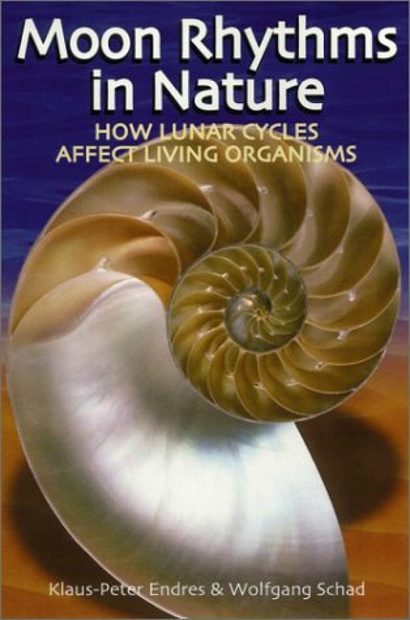Out of Print
By: Klaus-Peter Endres and Wolfgang Schad
300 pages, Col photos, b/w illus, figs, tabs
![Moon Rhythms in Nature Moon Rhythms in Nature]()
Click to have a closer look
About this book
Contents
Biography
Related titles
About this book
Distills wide-ranging observations of lunar influences on the earth's bio-sphere from plants to humans. Following an introduction to the astronomy of the moon rhythms is a study of how the tides and other intricate ocean movements are connected with the life processes of numerous organisms.
Contents
A brief introduction to the moon; a brief introduction to the tides; living beings in the tidal rhythm of our coastal areas; a worm, a fish, a squid and coral from the Pacific Ocean; the causal question; moon rhthms in inland organisms; moon rhythms in human beings; the rhythmical spectrum of human beings; of the quality of time.
Customer Reviews
Biography
Dr Klaus-Peter Enders, born in 1958, studied biology in Erlangen and graduated from the Max-Planck Institute at Heidelberg. He was a member of the Max-Planck Working Group on structural molecular biology in Hamburg. He lectures at the Institute for Evolutionary Biology at the University of Witten-Herdecke, Germany. Professor Dr Wolfgang Schad, born in 1935, studied biology, chemistry, physics and education. Since 1962 he worked as a Waldorf School teacher and as a lecturer at the Waldorf Teachers College in Stuttgart. He lectures at the Institute for Evolutionary Biology at the University of Witten-Herdecke, Germany.
Out of Print
By: Klaus-Peter Endres and Wolfgang Schad
300 pages, Col photos, b/w illus, figs, tabs
'Combines academic rigour with exciting readability. The two opening chapters on the moon and tides answered a lot of fundamental questions. This book is a source book for every science teacher and every lay person who ever had questions about the moon and its effects on earthly life, past, present and future.' -- Camphill Correspondence, March 2003 'This fascinating study brings together a wide range of observations of lunar influences on living organisms from plants to humans. For the reader without specialist knowledge, it offers an introduction to the complex subject of lunar influences on the earth's biosphere.' -- Watkins Review, Spring 2003 'Written in a charming, lyrical style appropriate to nature's organic, sidereal rhythms. I highly recommend this book as a rich and artful interdisciplinary synthesis that does justice to the vital, dynamic "element" of time.' -- Martin Lockley, Scientific and Medical Network Review, August 2003 'The authors' premise here that planets (i.e. the Moon) will affect all life, just as the Sun does and other forces, is rational. This book is a helpful resource of this entire phenomenon and brings together a wide array of information and insights revealing the ways in which the Moon affects so many aspects of life on the Earth. It considers also some important questions such as: the effect on birth and death, evolution, and the nature of time and rhythm of life.' -- Baelder Journal



































